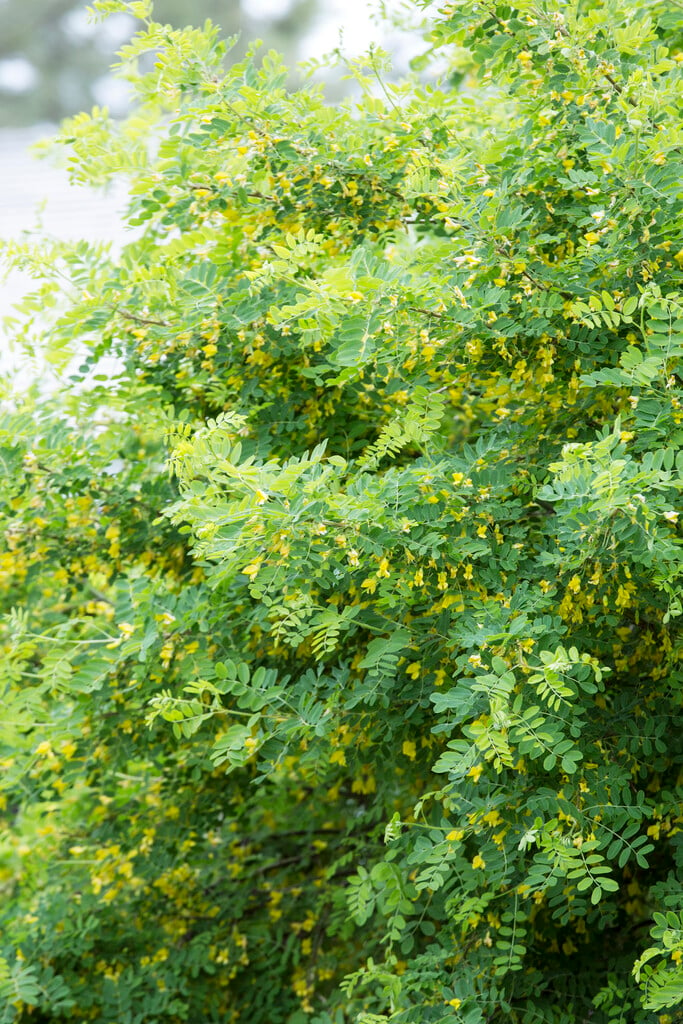Caragana arborescens
Siberian pea tree
An upright, deciduous spiny shrub to 6m in height, with light green leaves made up of oval-shaped leaflets. In late spring, pale yellow flowers appear. These are followed by brown seed pods in autumn
Size
Ultimate height
4–8 metresTime to ultimate height
10–20 yearsUltimate spread
2.5–4 metresGrowing conditions
Moisture
Well–drained, Moist but well–drainedpH
Acid, Alkaline, NeutralColour & scent
| Stem | Flower | Foliage | Fruit | |
| Spring | Yellow | Green | ||
|---|---|---|---|---|
| Summer | Green | |||
| Autumn | Green | |||
| Winter |
Position
- Full sun
Aspect
South–facing or West–facing
Exposure
Exposed or ShelteredDrought resistance
Yes Hardiness
H7Botanical details
- Family
- Fabaceae
- Native to GB / Ireland
- No
- Foliage
- Deciduous
- Habit
- Columnar upright
- Genus
Caragana are deciduous, usually spiny shrubs with pinnate leaves and solitary or clustered yellow, occasionally white or pink flowers, followed by brown pods
- Name status
Correct
- Plant range
- Siberia, Manchuria
How to grow
Cultivation
Grow in well-drained soil in full sun. Useful as a windbreak
Propagation
Propagate by seed, or by softwood cuttings
Suggested planting locations and garden types
- City and courtyard gardens
- Gravel garden
- Low Maintenance
- Flower borders and beds
- Hedging and screens
Pruning
Pests
Generally pest-free
Diseases
May be susceptible to honey fungus in gardens where it is present but insufficient data to determine degree of susceptibility
Get involved
The Royal Horticultural Society is the UK’s leading gardening charity. We aim to enrich everyone’s life through plants, and make the UK a greener and more beautiful place.
